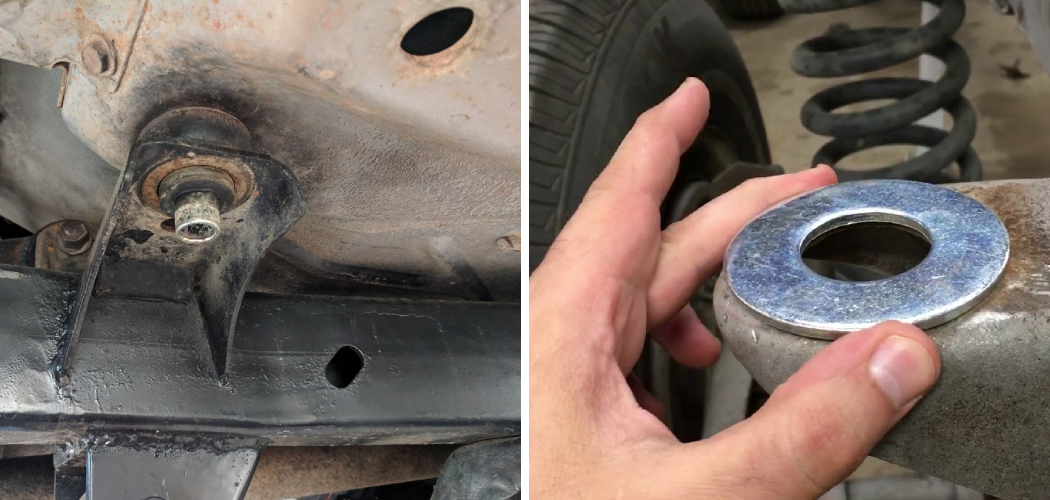Are you tired of feeling every bump and vibration on the road? Do you cringe every time your car’s body shudders and seems to fall apart at the seams? Well, fear not, because today we’re diving headfirst into the world of body mounts replacement, a skill that will not only improve your vehicle’s overall ride quality but also strengthen its structural integrity. Whether you’re a novice looking to learn a new skill or a seasoned pro seeking some helpful tips and tricks, you’ve come to the right place.

Buckle up and get ready for a wild ride as we explore the ins and outs of replacing body mounts, from diagnosing the problem to executing the repair like a pro. We’ll break down the process of how to replace body mounts step-by-step, provide valuable insights, and equip you with the expertise to conquer this task with confidence. So, grab your tools and let’s embark on this exciting journey together!
Why May You Want to Replace Body Mounts?
1 . To Improve Your Vehicle’s Overall Ride Quality
If you feel every bump, vibration, and jolt transmitted from the road to your car, it’s a telltale sign that your body mounts may have worn out. As they age and deteriorate due to prolonged exposure to rough roads and harsh weather conditions, they become less effective in cushioning the frame of your vehicle from shocks and vibrations. This, in turn, causes you to feel every impact on the road, making your ride uncomfortable and even hazardous.
2 . To Prevent Rust Damage
Body mounts serve a much more critical role than just providing a smooth ride – they also protect your car’s frame from rust and corrosion. As moisture seeps through cracks or gaps in damaged body mounts, it can accumulate on the frame and cause severe rust damage over time. By replacing worn or damaged body mounts, you can prevent this from happening and prolong your vehicle’s lifespan.
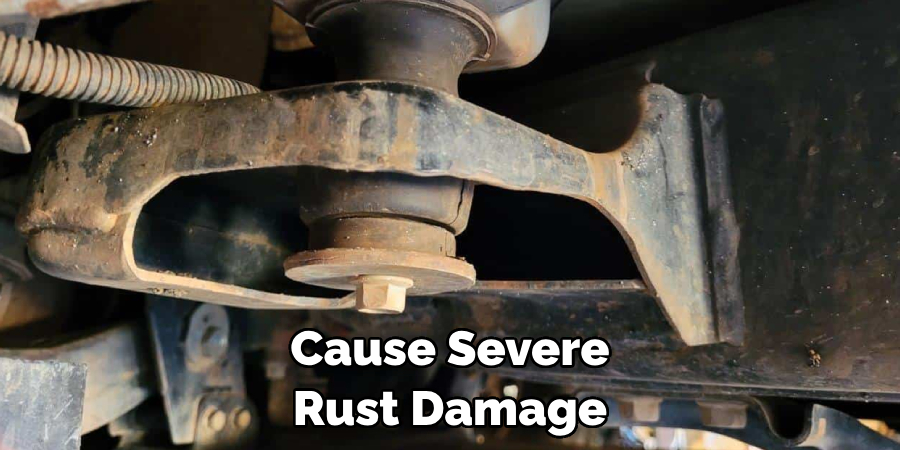
3 . To Maintain Structural Integrity
Body mounts support the weight of your car’s body and help distribute it evenly across the chassis. If they’re compromised, your vehicle’s structure becomes weaker and less stable, making it more susceptible to damage and accidents. By replacing worn or damaged body mounts, you can restore your car’s structural integrity and keep yourself safe on the road.
4 . To Avoid Costly Repairs
If left unaddressed, damaged body mounts can lead to other problems that may cost you a fortune in repairs. As they deteriorate, they can cause misalignments in the frame, suspension, and steering components, resulting in uneven tire wear and poor handling. Replacing body mounts early on is a cost-effective solution to prevent these issues from escalating and save you money in the long run.
5 . To Improve Performance
Worn or damaged body mounts can also affect your vehicle’s performance. As vibrations and shocks are transmitted to the chassis, they can cause unnecessary movement that reduces your car’s stability and handling. By replacing body mounts, you’re not only improving your vehicle’s ride quality but also enhancing its overall performance.
6 . To Increase Resale Value
If you’re planning on selling or trading in your car, replacing worn or damaged body mounts can significantly increase its resale value. Potential buyers or dealerships will consider a well-maintained vehicle with proper body mounts more valuable and be willing to pay a higher price for it. So, if you’re looking to get the most out of your car, don’t overlook this crucial aspect of maintenance.
How to Replace Body Mounts in 6 Easy Steps
Step 1: Diagnose the Problem
The first step is to determine if your body mounts need replacement. Watch out for signs such as excessive vibration and noise, rough ride, unaligned doors or windows, rust on the frame, or cracks and gaps in the mounts. If you notice any of these symptoms, it’s time to replace your body mounts.
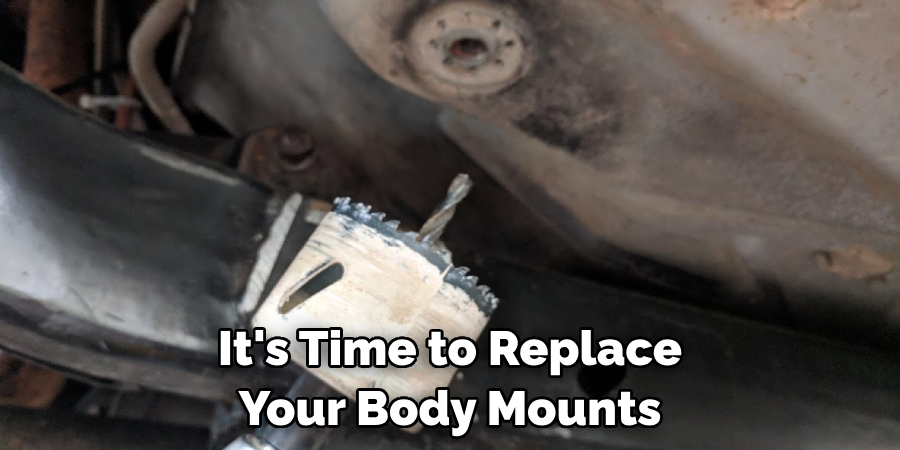
Step 2: Gather the Necessary Tools and Materials
Before getting started, make sure you have all the tools and materials required for the job. You’ll need a floor jack, jack stands, socket set, wrenches, penetrating oil, new body mounts (make sure to get the correct size for your vehicle), and safety equipment such as gloves and eye protection.
Step 3: Prepare Your Vehicle
Park your car on a flat and level surface, engage the parking brake, and place wheel chocks behind the rear tires. Then, raise the front of your vehicle with a floor jack and support it securely with jack stands.
Step 4: Remove the Old Body Mounts
Using penetrating oil, loosen and remove the bolts that secure the body mounts to the frame. Then, carefully remove the old mounts and any remaining debris or rust from the frame.
Step 5: Install the New Body Mounts
Place the new body mounts on the frame and secure them with bolts tightened to the manufacturer’s recommended torque specification. If necessary, use a jack to align them correctly before tightening.
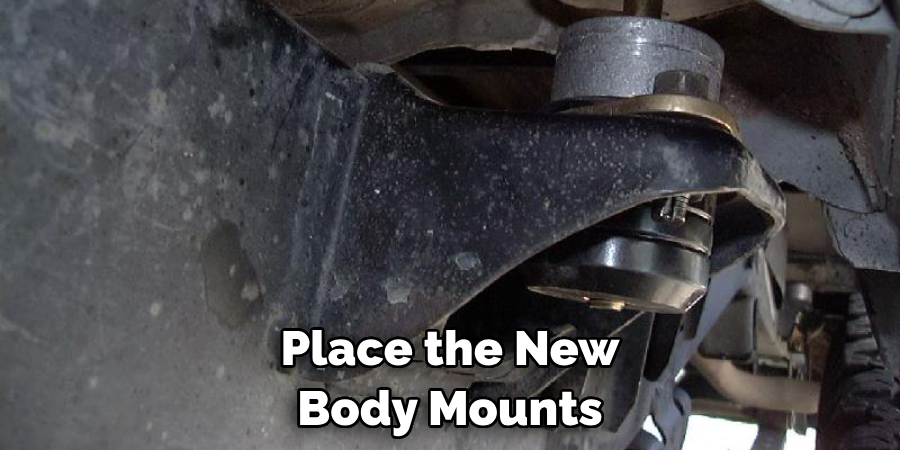
Step 6: Lower Your Vehicle and Test Drive
Once all the mounts are installed, carefully lower your vehicle to the ground and remove the jack stands. Take it for a test drive to check if everything is working correctly and enjoy your smooth and comfortable ride!
Frequently Asked Questions
What Precautions Should I Take When Replacing Body Mounts?
Always wear protective gear such as gloves and eye protection when working under a vehicle. Make sure to support the car securely with jack stands and never rely on the floor jack alone. Also, follow the manufacturer’s instructions and recommended torque specifications when installing the new mounts.
How Often Should I Replace My Body Mounts?
Body mounts usually last for about 100,000 miles or more, depending on your driving habits and road conditions. It’s best to inspect them regularly and replace them if you notice any signs of wear or damage.
Can I Replace Body Mounts Myself?
It’s possible to replace body mounts yourself if you have the necessary tools, skills, and knowledge. However, if you’re not confident in your abilities or don’t have the right equipment, it’s always best to seek professional help.
Can I Replace Just One Body Mount at a Time?
It’s recommended to replace all body mounts at once, even if only one is damaged or worn. This ensures equal distribution of weight and prevents uneven wear and tear.
How Much Does it Cost to Replace Body Mounts?
The cost of replacing body mounts can vary depending on the make and model of your vehicle, the quality of the mounts, and whether you’re doing it yourself or seeking professional help. On average, it can range from $100 to $500.
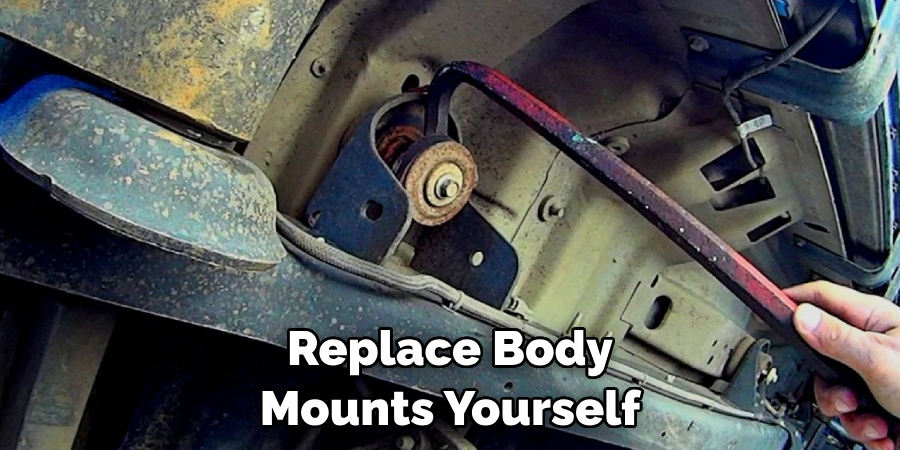
Will Replacing Body Mounts Affect My Car’s Alignment?
Replacing body mounts should not affect your car’s alignment, as long as you align the new mounts correctly. It’s always a good idea to get a wheel alignment after replacing body mounts, just in case.
What Can I Do to Prolong the Life of My Body Mounts?
Regular maintenance and inspections are key to prolonging the life of your body mounts. Avoid driving on rough roads or overloading your vehicle, as these can put extra stress on the mounts. Also, make sure to clean and lubricate them regularly to prevent rust and corrosion.
Overall, taking care of your car’s body mounts will go a long way in ensuring a smooth and safe ride. So, don’t neglect this essential aspect of vehicle maintenance and replace your body mounts when necessary for optimal performance and longevity.
Can I Replace Body Mounts on Any Type of Vehicle?
Body mounts can be replaced on most vehicles, including cars, trucks, SUVs, and vans. However, it’s always best to consult your vehicle’s manual or a professional mechanic for specific instructions and advice. Different makes and models may have different processes for replacing body mounts.
It’s also essential to make sure you’re using the correct size and type of mounts for your vehicle. So, do your research and follow proper procedures to ensure a successful replacement.
Conclusion
Now you know how to replace body mounts. Replacing body mounts may seem like a daunting task, but with the right knowledge and tools, anyone can do it. By following these simple steps, you can improve your vehicle’s ride quality, prevent rust damage, maintain its structural integrity, avoid costly repairs, and increase its resale value.
So why wait? Give your car the care it deserves and replace those worn or damaged body mounts today! So whether you’re a DIY enthusiast looking to tackle a new project or a concerned car owner seeking to ensure your vehicle’s safety and longevity, you can now confidently replace your body mounts with ease. Happy driving!

